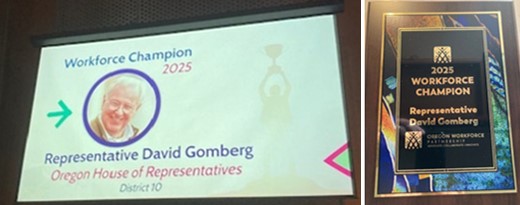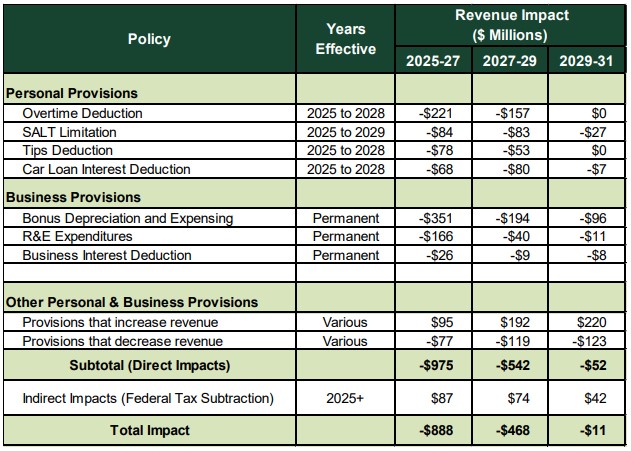| Immigrant deportations and sidewalk protests are the high-profile elements of our current environment. As a legislator, I have to look at protecting our freedoms, liberties, and voting rights. But I also need to be cognizant of changes that impact the services you receive and the cost of sustaining them.
At the end of September, Oregon lawmakers returned to Salem to dig into what the President’s federal budget cuts will mean for Oregonians. We heard from experts about how these changes threaten programs Oregonians rely on every day. From health care and food assistance to education, clean energy, emergency preparedness, and consumer protections, these cuts put families, workers, and communities at risk. Here’s a closer look at what we learned:
- Health Care: Trump’s budget and changes to Medicaid could push up to 200,000 Oregonians off the Oregon Health Plan, drive up private insurance premiums by $90–$165 per month (Oregon Health Authority slide 16), and force rural hospitals and community clinics to cut services or close (Northwest Human Services/OPCA memo). Cancer and chronic-illness patients are especially vulnerable, as they may lose treatment mid-course if they cannot keep up with reporting requirements. These changes will strain Oregon’s health care safety net, especially in rural areas where clinics are already operating on tight budgets.
- Food and Human Services: Federal food assistance cuts will affect 310,000 Oregonians, with 29,000 households losing an average of $58 per month (Oregon Department of Human Services slide 10). Nearly 3,000 legally present immigrants, including refugees and asylees, could lose eligibility altogether. Beginning in 2026, Oregon will also be required to pay a larger share of food assistance costs, creating new pressures on the state budget and forcing counties and service providers to find ways to fill the gaps.
- Education: Cuts to student loans and federal aid threaten Head Start teachers, social workers, behavioral health providers, and other essential public service careers (National Conference of State Legislatures slide 9). Nationally, $284 billion in federal student aid could be eliminated (National Conference of State Legislatures slides 2, 10), forcing borrowers into more expensive repayment plans. In addition, reductions to food assistance and Medicaid threaten free school meals and early learning services that help children start school healthy and ready to learn. These combined impacts could limit opportunities for students, educators, and families across Oregon.
- Labor and Workforce Development: New federal rules weaken protections for farmworkers, construction crews, and apprenticeships (Legislative Policy and Research Office memo, pages 3, 6–10). Proposed rollbacks to workplace safety oversight and requirements put workers at greater risk and could discourage people from claiming unemployment benefits. Programs that support workforce development, anti-harassment training, and non-discrimination protections in apprenticeship programs are also at risk, making it harder for women, veterans, and people of color to access good jobs and training opportunities.
- Climate, Energy, and Environment: Ending federal solar and battery tax credits will raise household energy bills by $100–$140 per year, eliminate thousands of clean energy jobs, and slow Oregon’s transition to clean power (Oregon Department of Energy slides 5–6, 10; Greg Dotson slide 11). Low-income and rural households are hit hardest, while federal rollbacks stall wind and solar permitting and block Oregon from enforcing zero-emission vehicle rules. These changes make it harder to meet state climate goals, increase costs for families, and put Oregon’s clean energy industry at risk.
- Emergency Management: Cuts to disaster mitigation and emergency management funding threaten county readiness, squeeze already thin budgets, and increase local costs for wildfire, earthquake, and flood recovery (Association of Oregon Counties slide 3). Programs like Building Resilient Infrastructure and Communities and Emergency Management Performance Grants, which counties rely on for disaster planning and mitigation, have been reduced or delayed, leaving communities less prepared for emergencies.
- Consumer Protection: Cuts to the Consumer Financial Protection Bureau leave Oregonians more exposed to scams, predatory lenders, and slower responses when trying to recover money (Oregon Division of Financial Regulation slide 5). With fewer staff and less oversight, aging adults and vulnerable families are at higher risk of losing money to unfair or deceptive financial practices.
These hearings painted a clear picture: Federal policies are putting Oregon families, workers, and communities at serious risk. Understanding these impacts helps state leaders plan, respond to, and advocate for the protections Oregonians rely on every day.
If you’d like to read a more comprehensive summary of what was presented in seven House committees, read this press release. If you’d like to dive deeper, you can watch recordings of hearings and review all meeting materials on the Oregon Legislative Information System for each day of hearings: September 29, September 30, and October 1. |







